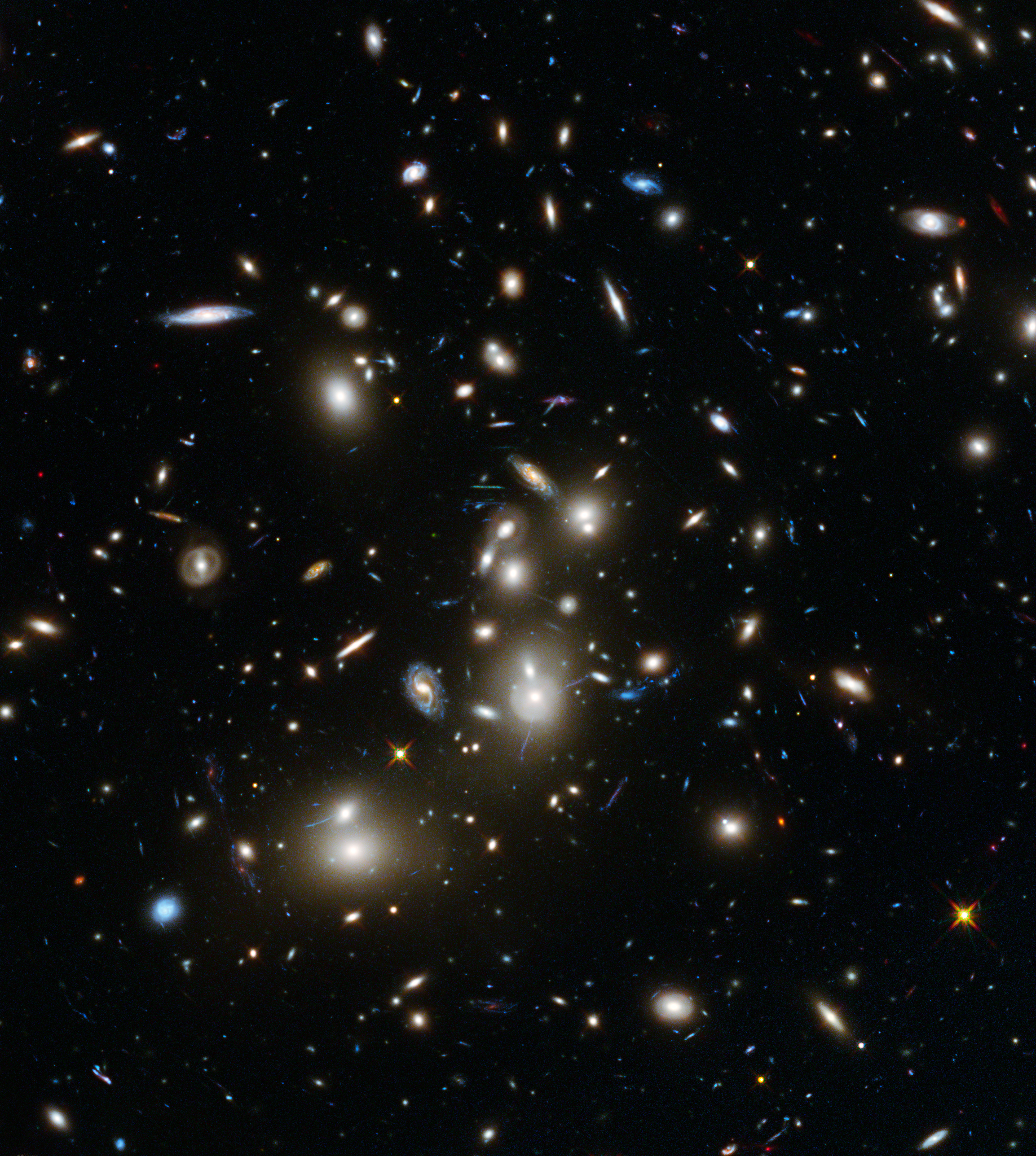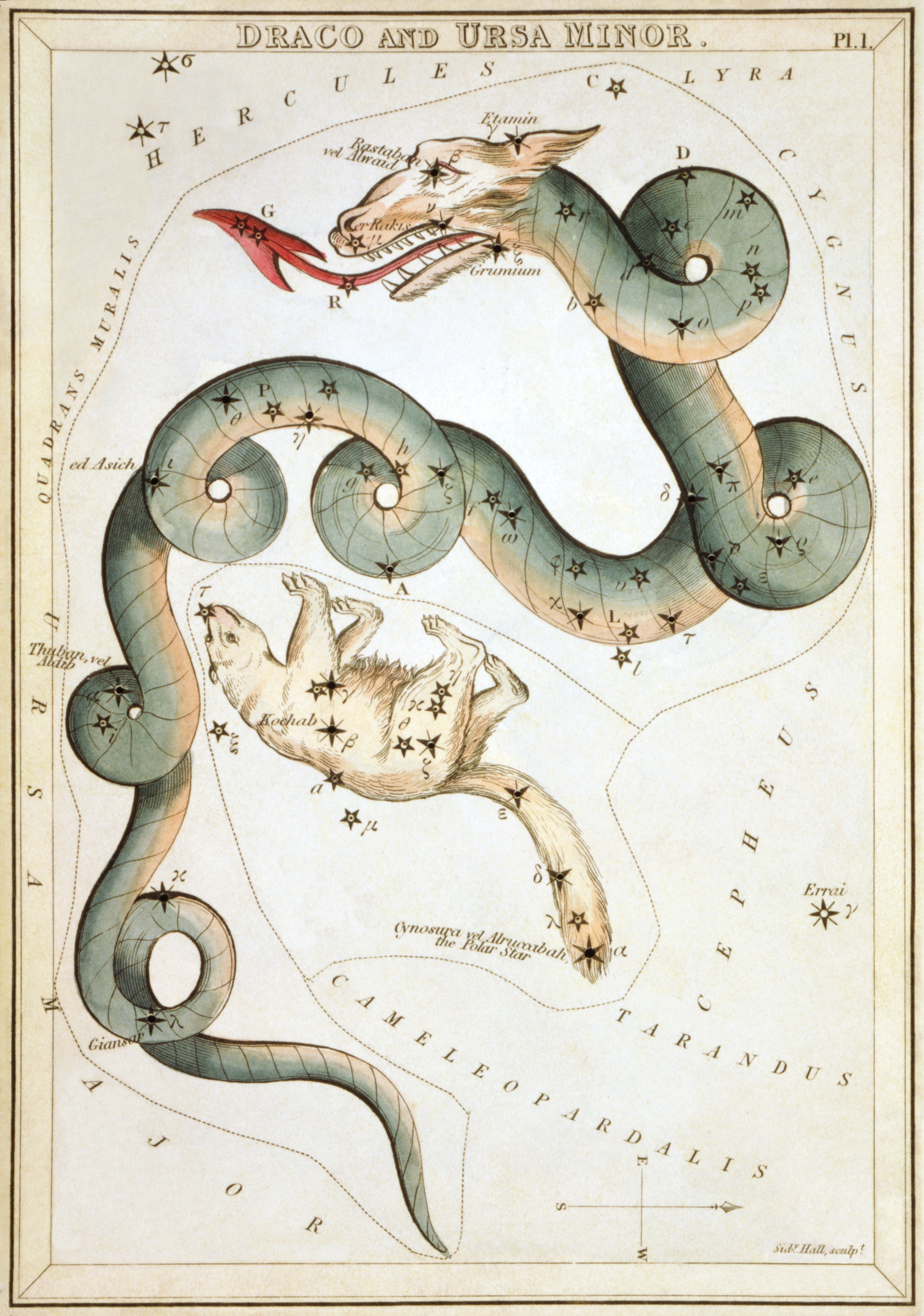|
Abell 2256
Abell 2256 is a rich nearby galaxy cluster in the Abell catalogue that exhibits a population of ~ 100 – 200 kpc long steep spectrum synchrotron filaments surrounding the cluster center with significant evidence of merger activity deduced by the presence of two separate X-ray peaks in the X-ray surface brightness distribution. One feature is a Large Relic. The other striking feature in the cluster is a Long Tail whose morphology suggests it is either a one-sided jet or a twin tail structure. The bending of the tails takes place very near the galaxy core where one might expect little impact from the galaxy's motion through the intergalactic medium, unless the parent galaxy has undergone extreme stripping. See also * List of Abell clusters * Radio relics Radio Relics are diffuse synchrotron radio sources found in the peripheral regions of galaxy clusters. As in the case of radio halos, they do not have any obvious galaxy counterpart, but their shapes are much more elongate ... [...More Info...] [...Related Items...] OR: [Wikipedia] [Google] [Baidu] |
Abell Catalogue
The Abell catalog of rich clusters of galaxies is an all-sky catalog of 4,073 rich galaxy clusters of nominal redshift ''z'' ≤ 0.2. This catalog supplements a revision of George O. Abell's original "Northern Survey" of 1958, which had only 2,712 clusters, with a further 1,361 clustersthe "Southern Survey" of 1989, published after Abell's death by co-authors Harold G. Corwin and Ronald P. Olowin from those parts of the south celestial hemisphere that had been omitted from the earlier survey. The Abell catalog, and especially its clusters, are of interest to amateur astronomers as challenge objects to be viewed in dark locations on large aperture amateur telescopes. The Northern Survey The original catalog of 2,712 rich clusters of galaxies was published in 1958 by George O. Abell (1927–1983), who was then studying at the California Institute of Technology. The catalog, which formed part of Abell's PhD thesis, was prepared by means of a visual inspection of th ... [...More Info...] [...Related Items...] OR: [Wikipedia] [Google] [Baidu] |
Epoch (astronomy)
In astronomy, an epoch or reference epoch is a moment in time used as a reference point for some time-varying astronomical quantity. It is useful for the celestial coordinates or orbital elements of a celestial body, as they are subject to perturbations and vary with time. These time-varying astronomical quantities might include, for example, the mean longitude or mean anomaly of a body, the node of its orbit relative to a reference plane, the direction of the apogee or aphelion of its orbit, or the size of the major axis of its orbit. The main use of astronomical quantities specified in this way is to calculate other relevant parameters of motion, in order to predict future positions and velocities. The applied tools of the disciplines of celestial mechanics or its subfield orbital mechanics (for predicting orbital paths and positions for bodies in motion under the gravitational effects of other bodies) can be used to generate an ephemeris, a table of values giving the posit ... [...More Info...] [...Related Items...] OR: [Wikipedia] [Google] [Baidu] |
Ursa Minor (constellation)
Ursa Minor (Latin: 'Lesser Bear', contrasting with Ursa Major), also known as the Little Bear, is a constellation located in the far northern sky. As with the Great Bear, the tail of the Little Bear may also be seen as the handle of a ladle, hence the North American name, Little Dipper: seven stars with four in its bowl like its partner the Big Dipper. Ursa Minor was one of the 48 constellations listed by the 2nd-century astronomer Ptolemy, and remains one of the 88 modern constellations. Ursa Minor has traditionally been important for navigation, particularly by mariners, because of Polaris being the north pole star. Polaris, the brightest star in the constellation, is a yellow-white supergiant and the brightest Cepheid variable star in the night sky, ranging in apparent magnitude from 1.97 to 2.00. Beta Ursae Minoris, also known as Kochab, is an aging star that has swollen and cooled to become an orange giant with an apparent magnitude of 2.08, only slightly fainter than Po ... [...More Info...] [...Related Items...] OR: [Wikipedia] [Google] [Baidu] |
Galaxy Cluster
A galaxy cluster, or a cluster of galaxies, is a structure that consists of anywhere from hundreds to thousands of galaxies that are bound together by gravity, with typical masses ranging from 1014 to 1015 solar masses. They are the second-largest known gravitationally bound structures in the universe after galaxy filaments and were believed to be the largest known structures in the universe until the 1980s, when superclusters were discovered. One of the key features of clusters is the intracluster medium (ICM). The ICM consists of heated gas between the galaxies and has a peak temperature between 2–15 keV that is dependent on the total mass of the cluster. Galaxy clusters should not be confused with ''galactic clusters'' (also known as open clusters), which are star clusters ''within'' galaxies, or with globular clusters, which typically orbit galaxies. Small aggregates of galaxies are referred to as galaxy groups rather than clusters of galaxies. The galaxy groups and c ... [...More Info...] [...Related Items...] OR: [Wikipedia] [Google] [Baidu] |
Radio Relics
Radio Relics are diffuse synchrotron radio sources found in the peripheral regions of galaxy clusters. As in the case of radio halos, they do not have any obvious galaxy counterpart, but their shapes are much more elongated and irregular compared to those of radio halos. Their energy distribution is steep (much more energy at low radio frequency than at high radio frequency), with hints of a distribution of different ages for the emitting electrons across the whole dimension of the emitting region. Radio relics can be divided into two main groups: Cluster radio shocks or radio gischt are large elongated, often Mpc-sized, radio sources located in the periphery of merging clusters. They probably trace shock fronts in which particles are accelerated via the diffusive shock acceleration mechanism. Among them are double-relics with the two relics located on both sides of a cluster center. Their integrated radio spectrum usually follows a single power-law. Radio phoenices are relate ... [...More Info...] [...Related Items...] OR: [Wikipedia] [Google] [Baidu] |
Outer Space
Outer space, commonly shortened to space, is the expanse that exists beyond Earth and its atmosphere and between celestial bodies. Outer space is not completely empty—it is a near-perfect vacuum containing a low density of particles, predominantly a plasma of hydrogen and helium, as well as electromagnetic radiation, magnetic fields, neutrinos, dust, and cosmic rays. The baseline temperature of outer space, as set by the background radiation from the Big Bang, is . The plasma between galaxies is thought to account for about half of the baryonic (ordinary) matter in the universe, having a number density of less than one hydrogen atom per cubic metre and a kinetic temperature of millions of kelvins. Local concentrations of matter have condensed into stars and galaxies. Studies indicate that 90% of the mass in most galaxies is in an unknown form, called dark matter, which interacts with other matter through gravitational but not electromagnetic forces. Observations s ... [...More Info...] [...Related Items...] OR: [Wikipedia] [Google] [Baidu] |
List Of Abell Clusters
The Abell catalogue is a catalogue of approximately 4,000 galaxy clusters with at least 30 members, almost complete to a redshift of ''z'' = 0.2. It was originally compiled by the American astronomer George O. Abell in 1958 using plates from POSS, and extended to the southern hemisphere by Abell, Corwin and Olowin in 1987. The name "Abell" is also commonly used as a designation for objects he compiled in a catalogue of 86 planetary nebulae in 1966. The proper designation for the galaxy clusters is ACO, as in "ACO 13", while the planetary-nebula designation is the single letter A, as in "A 39". 1–1999 2000–4076 Southern catalogue S1–S1174 See also * Lists of astronomical objects * List of galaxy groups and clusters This article lists some galaxy groups and galaxy clusters. Defining the limits of galaxy clusters is imprecise as many clusters are still forming. In particular, clusters close to the Milky Way tend to be classified as galaxy clusters eve ... [...More Info...] [...Related Items...] OR: [Wikipedia] [Google] [Baidu] |
Abell Objects
Abell may refer to: People * Abell (surname) * George O. Abell, of the astronomical catalogues fame Places ;United States * Abell, Maryland, a location in St. Mary's County, Maryland * Abell, a neighborhood in Baltimore, Maryland * Abells Corners, Wisconsin, an unincorporated community Astronomy *Abell catalogue The Abell catalog of rich clusters of galaxies is an all-sky catalog of 4,073 rich galaxy clusters of nominal redshift ''z'' ≤ 0.2. This catalog supplements a revision of George O. Abell's original "Northern Survey" of 1958, wh ... of rich clusters of galaxies (ACO) * Abell Catalog of Planetary Nebulae (A) Bibliographical database * ABELL, the ''Annual Bibliography of English Language and Literature'' See also * Abel (other) {{disambiguation, geo ... [...More Info...] [...Related Items...] OR: [Wikipedia] [Google] [Baidu] |



